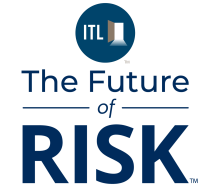Distracted driving remains one of the deadliest yet grossly underreported causes of accidents in the U.S., contributing to more than 3,000 deaths annually and countless injuries. Despite extensive public awareness campaigns, achieving sustained behavior change requires more precise, targeted interventions. Commercial fleets, positioned uniquely at the intersection of transportation safety and risk management, are emerging as critical players in reshaping how insurers assess, mitigate, and ultimately prevent risks associated with distracted driving through telematics.
Data-Driven Risk Mitigation: Turning Insights Into Action
Telematics technologies gather impressive amounts of data on driving behaviors, offering fleet managers and insurers granular insights into driver habits and route-specific risks. Through predictive analytics, insurers and fleets can identify and address high-risk zones, such as accident-prone intersections, school zones, or congested roadways. This allows for tailored interventions, including targeted safety campaigns, improved signs, adjustments to traffic infrastructure, or increased enforcement efforts in identified high-risk areas.
Data analytics can also highlight often-overlooked dangers contributing to distracted driving, such as outdated driver education. By integrating these less obvious risk factors into their predictive models, insurers and fleets can implement comprehensive prevention strategies that address visible risks and subtler, yet important, driver safety issues.
For example, telematics-driven risk mapping has allowed insurers and fleets to implement preventive measures in historically dangerous locations, reducing accident rates and claims frequency. By focusing efforts precisely where they're needed, this data-driven approach transcends traditional reactive methods, positioning insurers and fleet operators as risk mitigators.
Aligning Pricing With Real-World Behavior
Insurance pricing traditionally relies heavily on broad historical data and generalized risk profiles, often failing to capture the nuances of individual driver behavior. Telematics introduces a shift, enabling insurers and fleet operators to implement behavior-based incentive models. These models reward drivers for consistently executing safer driving habits with real-time feedback and tangible benefits, such as discounted premiums or performance-based rewards.
Insurers encourage sustained improvement in driving practices by creating incentives tied directly to observed behavior. Fleets that use these incentive programs regularly report substantial reductions in distracted driving incidents, resulting in fewer claims and lower insurance costs. Such incentive-driven models thus offer a compelling advantage, transforming insurance from a passive coverage product into an active driver of safer roads.
Predictive Modeling: Preventing Claims
Beyond simply recording current driving behaviors, telematics data enables predictive modeling, allowing fleets and insurers to anticipate and mitigate risks before they materialize into claims. Predictive analytics identify patterns and indicators of potential incidents, such as frequent hard braking events, abrupt acceleration, or erratic lane changes. Recognizing these early signs enables fleet managers to implement targeted training, corrective coaching, and preventative interventions for at-risk drivers.
These examples demonstrate the power of predictive telematics, with fleets lowering their incident rates by addressing risk factors identified through data. Insurers benefit directly from this preventive approach, witnessing reductions in claims frequency and associated operational costs. As such, the predictive capacity of telematics technology shifts the focus from managing claims after the fact to preventing accidents, aligning closely with insurers' business objectives and profitability.
Expanding Safety From Fleets to Communities
Telematics-driven safety initiatives have a ripple effect that extends far beyond fleet vehicles. Professional drivers, consistently monitored and coached through telematics technologies like AI-powered dash cams and real-time, in-cab alerts, often carry improved driving habits into their personal lives. This behavioral transfer improves community safety, reducing the broader incidence of distracted driving in local neighborhoods and personal travels.
This community-level impact provides insurers with an additional layer of risk mitigation. Safer communities translate into fewer accidents and claims, creating safer driving environments for everyone. Insurers benefit from this broader cultural shift toward safer roads, reinforcing their role not merely as providers of financial protection but as partners in community safety.
Navigating Legal and Regulatory Challenges
Increased scrutiny and evolving regulatory landscapes surrounding distracted driving pose challenges for insurers. Predictive telematics offers insurers a valuable tool for managing and mitigating these challenges. Insurers and fleets establish a transparent framework demonstrating their commitment to risk management by maintaining comprehensive, data-driven records.
This approach helps insurers stay ahead of potential regulatory changes and liability issues by providing clear, objective evidence of risk management practices and incident prevention efforts. The transparency fostered by telematics data builds trust among regulators, policyholders, and fleet operators, positioning insurers as responsible, forward-thinking leaders in risk management.
Collaborative Approaches for Long-Term Impact
The successful implementation of telematics-driven safety programs requires close collaboration among insurers, fleet managers, and technology providers. Insurers are critical in advocating for and facilitating the adoption of telematics technologies, providing incentives to fleets through favorable policy terms, discounts, and educational support. Fleets, in turn, must commit to integrating these technologies fully into their operational strategies, embracing driver education and performance monitoring.
This collaboration creates a strong ecosystem dedicated to safety measures, data transparency, and continuous improvement. The mutual benefits, lowered claims rates, improved road safety, reduced operational costs, and enhanced community relations showcase the value of a shared approach to risk management.
Insurers as Strategic Partners in Prevention
Insurers are no longer just entities that assist after accidents. With predictive telematics, they're becoming crucial allies in actively working to prevent accidents in the first place. By using live data and intelligent predictions, they're getting involved in making our roads safer for everyone. This forward-thinking approach isn't just the right thing to do; it also strengthens insurers' businesses by improving profits and risk assessment, all while building stronger connections with the people and communities they support.
As distracted driving continues to threaten road safety, insurers armed with telematics technology and fleet-driven safety initiatives are uniquely positioned to lead the charge. This transforms how risks are assessed and managed, ultimately reducing the devastating human and financial toll of distracted driving.








